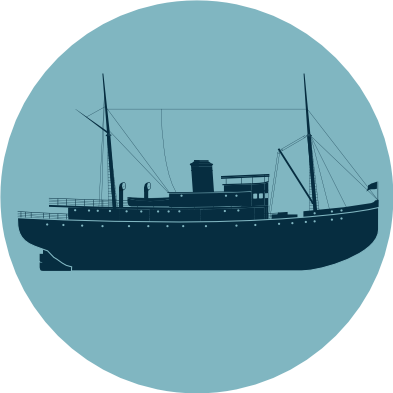
 0
0Transcription: "The maritime tradition in L'Islet"
This page includes the written transcript of this podcast, translated into English.
The first people to live on Côte-du-Sud settled near the big river.
Sometimes it was at the confluence of one of the many smaller rivers and streams that crisscross the territory, and occasionally at the edge of a cove, which constitutes a lovely harbour for boats, like Anse à Gilles, the cove not far from our museum. A number of these pioneers settled on sections of land that extend into the river. In all cases, the presence of water was a determining factor. The parish of L'Islet-sur-Mer, formerly known as Notre-Dame-de-Bon-Secours, is spread out over land that has all these characteristics. This parish took shape in 1677 on two seigneuries, that of L'Islet-Saint-Jean and that of Bonsecours.
After the English Conquest, traffic on the river intensified. British ships sailed up and down the St. Lawrence to ensure a link with their new colony. At that time, the population of L'Islet built its own boats, needed to get to Quebec City. Look out upon the vast waterway and imagine yourself in 1790.
Can you see, in the distance, this family hoisting their sails to go sell their harvest at the market in town?
In those days, it was only natural to do so. It's a bit like a family today taking their van to do the same thing!
The people of L'Islet have sailed independently for decades while conducting cabotage, also known as coasting trade. This is how the people of L'Islet came to excel at sailing their boats. These vessels were built specifically for navigation on the river, with the tidal currents as a second engine. The knowledge they acquired allowed the sailors of L'Islet to enter the world of long-distance navigation, including lengthy crossings.
Starting in the 19th century, the young men of L'Islet-sur-Mer spread the name and renown of their parish far and wide.
Indeed, many of them became sailors on large sailing ships that transported various goods on the seas of the world. Choosing to work on these large merchant ships also meant letting go of agriculture, the way of life practiced by their parents and ancestors. At the same time, population growth and limited land capacity did not allow everyone to become a farmer.
At first, the British captains were the only ones in command of these watercraft. Later, various tradespeople were invited aboard the ships: apprentice sailors known as mousses; sailmakers who repaired the sails; riggers who installed the rigging, referring to the entire arsenal of ropes and sails; as well as carpenters and cooks. The region of L'Islet stands out as the homeland of a large number of sailors.

